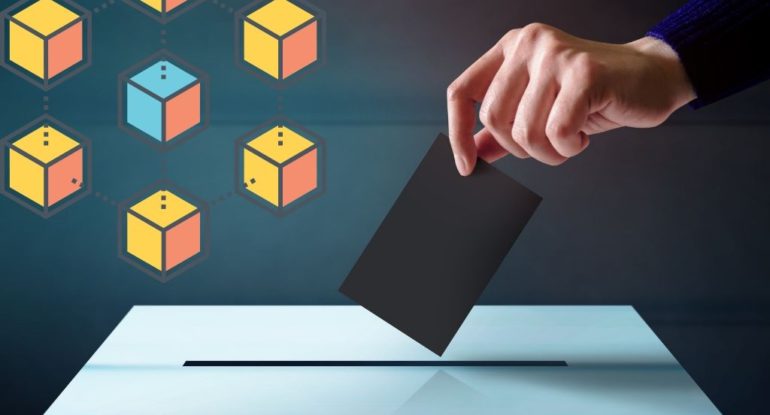How Do You Add Blocks To A Blockchain Network?

Although blockchain is frequently associated with cryptocurrencies, the technology has a variety of applications in several fields. Blockchains are already being utilized to hold asset data for various purposes, from real estate transactions to supply chain management in industries like health care and education.
In all use cases, the blockchain serves as a shared, immutable digital record of all transactions, known as blocks.
Describe a blockchain.
A blockchain, commonly referred to as Distributed Ledger Technology (DLT), is a continuously updated, decentralized log of transactions. A blockchain network can monitor almost any asset. Still, the technology is most frequently linked with cryptocurrencies like bitcoin (BTC) and ether (ETH), each of which has its corresponding blockchain network. In the past, financial institutions tracked and stored transactions, and monitoring such data was frequently time-consuming and restricted to specific privileged individuals.
Blockchain technology makes record keeping transparent and can be shared across networks. As soon as a transaction is included in the ledger, no one party can alter it, and automated tools called smart contracts may carry out transactions without the need for a middleman like a bank. Additionally, the blockchain does not have a single master copy; rather, the data is cross-checked (verified) by other computers (nodes) in the network.
Blockchain technology can improve security, foster trust, and hasten network transactions.
How does the blockchain function?
The blocks of data and the limitless virtual chain that links and tracks them are the two primary parts of blockchains.
Here are a couple more important words to comprehend:
- The term “block” refers to a group of data that includes a timestamp and other encrypted details about recent transactions that the network must first verify before being added to the chain.
- Nodes are the machines that make up a network and keep complete copies of all transactions, making it nearly impossible to alter them.
- The alphanumeric string is known as a “hash,” which confirms transactions on the blockchain and leaves a digital trail,
- Using a proof-of-work consensus method, mining entails validating and adding blocks to a blockchain ledger and putting cryptocurrency currencies into circulation.
- The term “once” refers to an encrypted number that miners must decode to validate a new block on the blockchain before closing it.
- A database that is synced and shared by users over a decentralized network is known as a distributed ledger.
- Block reward is the incentive miners receive in exchange for their efforts and is used to promote network activity.
To fuel a blockchain, numerous established technologies come together. Blockchain builds a secure digital identity using two cryptographic key types: public and private keys. Information can be protected with cryptography by being changed so that only the intended receiver can use it. A dispersed network then maintains the network security and transaction validation. A unique set of guidelines known as a protocol controls the entire procedure.
How is data added to a blockchain as blocks?
A blockchain can add new blocks and verify transactions using a variety of consensus processes. The two most popular techniques in cryptocurrencies are proof-of-work and proof-of-stake.
Bitcoin, the first significant use of blockchain technology, was described in Satoshi Nakamoto’s 2008 article “Bitcoin: A Peer-to-Peer Electronic Cash System.” It employs a proof-of-work consensus algorithm to generate new blocks and add fresh bitcoins to circulation. Through mining, this mechanism verifies transactions, and those who do this are known as miners.
Since there is no centralized authority, the network as a whole controls transactions and issues new currency.
Here is an illustration of a bitcoin transaction in action:
Let’s say User A wants to pay User B 1 bitcoin (BTC).
When User A starts a transaction, the sender and recipient’s details are timestamped on a block, transferred to a mempool (short for memory pool), and queued up to be verified and added to the blockchain. After finding a block, miners will take batches of transactions and check that all the data, including messages, public keys, and digital signatures, are accurate.
Once the data is confirmed, the block is broadcast to every node in the network. Each node must review the block and concur that it is genuine before adding it to the official chain. A bitcoin transaction’s confirmation typically takes ten minutes.
At the end of the procedure, User A will have transferred User B 1 BTC, all nodes on the network will have approved the transaction based on the selected consensus model, and a bitcoin miner will have gotten a reward for successfully verifying the transaction. There is now an endless public chain connecting new chunks of data about that transaction to one another.
Also, read – Algorand and Blockstack join to adopt Clarity blockchain smart contract language
Future applications for blockchain
However, blockchain technology has practical applications that go beyond cryptocurrency transactions. Today, thousands of cryptocurrencies operate on dozens of blockchain networks. Blockchain networks like Ethereum and Bitcoin are constantly being upgraded, incorporating new techniques to become more effective, energy-conscious, and affordable than ever.




























































